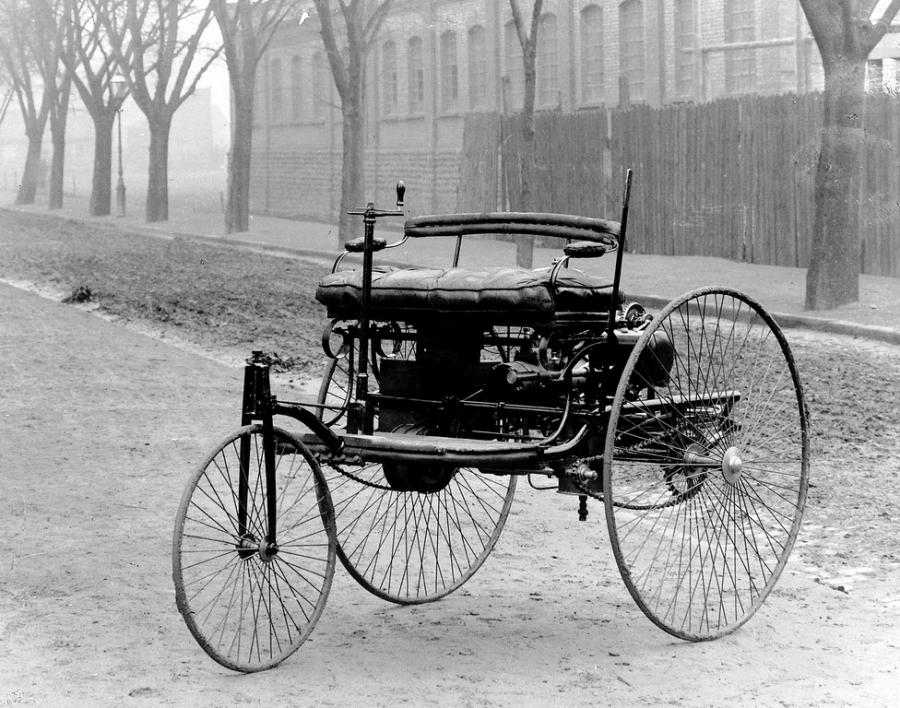
The Complete History of Cars
The Complete History of Cars
NEW YORK, NEW YORK, UNITED STATES, July 23, 2021 /EINPresswire.com/ -- The Complete History of Cars
Cars are amazing and it is quite difficult for us to imagine our daily routine without seeing them or driving one. From luxury cars to sports cars to electric vehicles or simple cars used primarily as a means of transportation or as a show-off, it is no wonder that these four-wheeled shiny toys have become a hobby for people like me and you. But, how much do you know about the history of the cars you’re driving now? Do you know how the first one was built and how it has improved over the years? Well, we’re here to give you that information, so fasten your seatbelt as we take you back in time to the 1800s!
The early years of automobile production were highly dominated by the Europeans as the first practical automobile with a petrol engine was built by German inventor Karl Benz in 1886. This three-wheeled Motorwagen was test-ran by his wife, Bertha Benz, who drove it on the first long-distance trip from Mannheim to Pforzheim and back in 1888. After her trip, Karl Benz got the insight to add more improvements like four wheels, fuel tank, and rear brakes to make it look more like a car and less than a horse carriage.
Wilhelm Maybach of Daimler Motoren Gesellschaft designed the first Mercedes in 1901 when he created a 35hp engine that weighed 14pounds and achieved a top speed of 53miles per hour. This success opened up the automobile industry and more car manufacturers began to spring up. But the market size for the automobile industry was relatively small as cars were expensive and time-consuming to produce, so they were rather too costly for people to buy.
The automobile industry began to spread to other continents and by the first half of the twentieth century, the industry became dominated by the Americans as more than 30 automakers produced 2,500 vehicles in 1899. In 1908, Henry Ford built Model T – the first car that was affordable and easily accessed by most average families. The Ford Motor Company also invented the assembly line that was used for the mass production of cars and by 1918, most households owned a Model T automobile. As time went on, Ford’s Model T became cheaper to buy the price dropped from $850 to $260 due to the mass production technique used by the company and around 15million were sold.
Williams C. Durant also established General Motors in 1908 and as more car companies sprung up, varieties of car designs began to flood the market and people had access to cheaper automobiles. By 1920, Ford, Chrysler, and General Motors emerged as the “Big Three” auto companies that produced cars for the general public. But Ford Motor Company refuse to upgrade its designs and General Motors overtook them by owning more than 48% of the market share, slightly followed by Chrysler with 25%. In 1930, The Great Depression crumbled the growing auto industry as many car companies suffered from bankruptcy and had to shut down. This lead to less competition and the “Big Three” continued to produce cars for the general public.
During the Second World War, car production stopped as the government used manufacturing facilities to produce military vehicles and weapons - thereby halting the production of personal cars. After the end of World War II, personal car production resumed but American automakers were unable to make safe and defect-free vehicles. Also with the imposition of federal standards of automotive safety (1966), increasing fuel prices following the oil shocks of 1973 and 1879, emission of pollutants (1965 and 1970), and energy consumption (1975), car production fell into the hands of the Europeans and Japanese who could make vehicles that adhered to these new regulations.
During this period, companies merged with Japanese companies like Toyota to get car parts and assemble them in the U.S, thereby helping Japanese automakers to infiltrate the U.S markets at a cheaper price. And Honda became the first Japanese automaker to open plants in Canada and the United States.
The 1980s came with lots of improvements as car production increased due to the influence of globalization, more people bought cars due to stable prices and by 1990, the SUVs became a popular demand. The coming 2000s also saw major technological advancement in the auto industry as cars running on electric batteries were manufactured and it was easier to obtain credit to purchase expensive automobiles.
By 2010, the auto industry evolved as fuel-efficient and sustainable vehicles were produced, more add-on luxury was included and drivers had more options regarding what kind of cars to buy. And in 2020, we saw an increase in the production of safe electric and self-driven vehicles for a pollution-free earth.
In conclusion, cars have evolved from the simple Model T to the somewhat complicated designs of electric vehicles, and we can’t wait to see the next big thing in the auto industry.
Mr Auto
212AutoWorld
email us here
Visit us on social media:
Facebook
Twitter
LinkedIn
EIN Presswire does not exercise editorial control over third-party content provided, uploaded, published, or distributed by users of EIN Presswire. We are a distributor, not a publisher, of 3rd party content. Such content may contain the views, opinions, statements, offers, and other material of the respective users, suppliers, participants, or authors.



